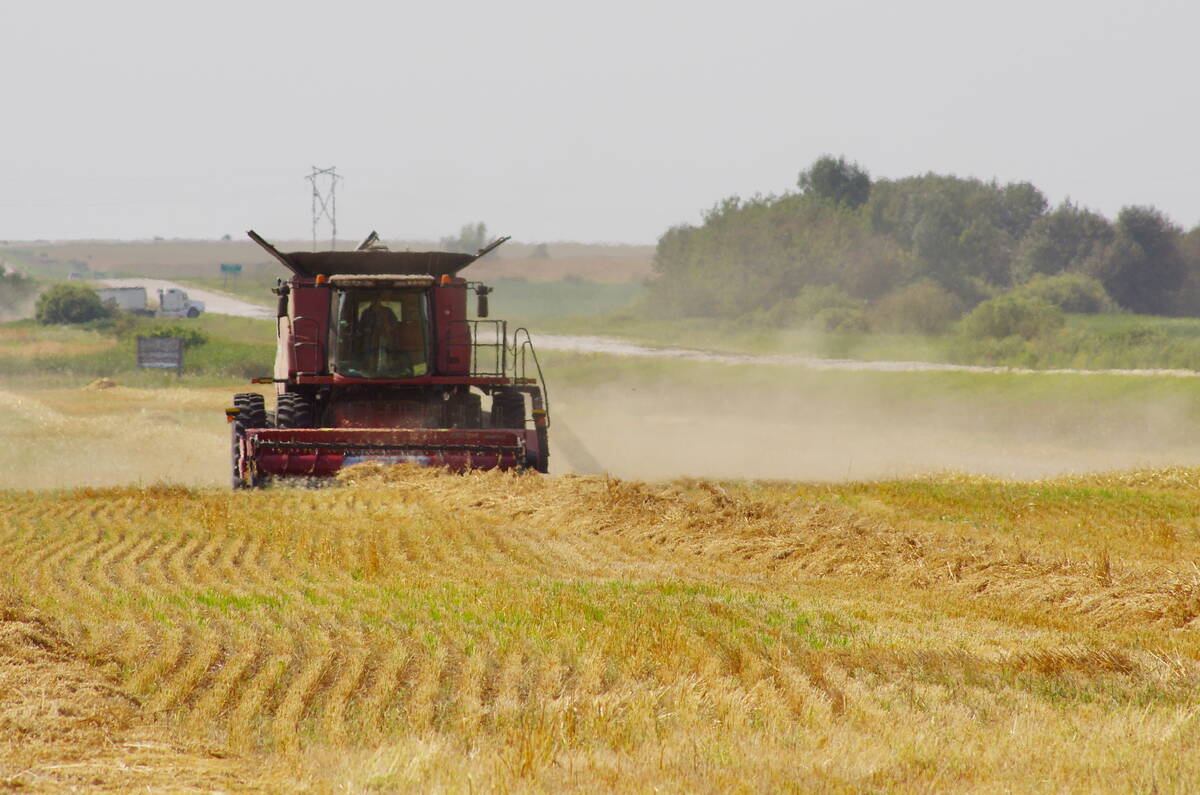University of Saskatchewan grad student Will Short has been working on a spray to prevent frost damage in early spring crops. While the study primarily involves canola, there’s been some testing on potato plants as well, making the trial of interest to vegetable producers as well as the annual crops.
He shared results from his ongoing study during the Saskatchewan Fruit Growers Association and Saskatchewan Vegetable Growers Association conference, saying that after testing a previously researched kaolin clay spray from the United States, he was seeking a different solution.
“I watched a YouTube video about this hydrophobic silica,” said the third-year PhD student.
Read Also

Herbicide resistance sprouts in Manitoba’s wild oats
Farmers across Manitoba this fall are gearing up for the latest salvo in what, for many, has become a longtime battle to beat out wild oats.
“And I was like, ‘wait a second. I should test this out.’ ”
Silica is naturally hydrophobic. The material has many different uses and can be found in various industries. It’s often added to housing insulation and can be found in caulking and even seed treatments to limit water intake.
Short’s frost spray is a mix of silica water, and ethanol, which forms a superhydrophobic film that prevents ice from forming on the plant by repelling water such as dew or rain. He said the silica spray creates a barrier on the plant’s surface, which prevents the ice from “entering” or propogating into it. As a result, it reduces the risk of frost damage — in some cases, eliminating it all together.
“I did this like a month ago, and three out of four plants were protected. One of them froze — it was still alive but it was damaged,” Short said.
He conducts his experiment with canola seedlings that are near the four leaf stage. He has tested coated and non-coated, dry and misted plants in various combinations. The spray is applied at least two hours before testing to ensure the coating is dry.
So far, results have shown the spray to be an effective barrier against ice and water to -5 C, with the plant fully dying at -9 C. The recent experiment, which took place in January, involved four plants, each coated and misted.
“And this one (a more recent test), I did the same thing and noticed two out of the four had damage. But one of them, it was damaged but not as much.… (With the spray), it had less time to freeze, basically less damage.”
This variation is a result of inadequate coverage from the spray bottle, exposing some plant areas to ice formation and freezing.
In the growth chamber of the university’s Agriculture Building, Short demonstrated the effectiveness of the hydrophobic silica spray.

The water fell right off when water was poured over previously coated plants, compared to the non-sprayed plants, where the water would catch on the leaf and form small droplets.
He has mostly been testing the spray at the “younger stages” of plant development, focusing on the vulnerability of seed leaves, or cotyledons.
“The younger tissues are more relevant,” he said.
“If there’s going to be frost problems, it’s probably going to be younger tissues.”
His previous tests have been “quick tests” of dropping the temperature of the controlled freezer by a degree per minute to evaluate the spray’s performance. Now, the tests have been bumped to prolonged freezes in an attempt to more closely simulate nature.
“In one of my tests, I’ve gone from five degrees all the way down to like negative 20, or until I see through the thermal camera that everything’s frozen,” Short said.
“These most recent tests, I’ve only been going down to negative four and holding it for an hour.”
He had run a few tests during the fall outside of the controlled growth chamber and freezer. There was some success with the first outdoor experiment, proving durability of the spray and keeping many plants alive.
The spray was applied two entire days before the frost hit in fall, needing no reapplication. The only issue occurred with the low temperatures that dipped for long periods overnight, something that typically doesn’t occur in the spring.
Short’s next steps will be testing in the natural spring environment. He’ll be testing on his canola plants, but would also like to test it on other herbaceous crops and vegetables.
He’s also looking for volunteers. If a producer is interested in putting the spray to the test themselves, they can contact Short via email at will.short@usask.ca.
In addition to his work on the spray, Short has been working on a second method of preventing frost damage, this one more long term.
“I’m looking at cotyledon wax (and) leaf wax and seeing what types of waxes are missing or lower in cotyledons versus leaves,” he said.
The wax cuticle is a natural part of a plant’s leaf, which causes a hydrophobic effect. It can be noticed as a bit of a whiteish coating on the leaves of plants such as canola. However, it’s more noticeable on the main leaves of the plant than on cotyledons.
Cotyledons are not “true leaves,” meaning the composition of their wax cuticle is different. These seed leaves are thus more susceptible to frost damage.
The wax crystals can be imagined as little points on a leaf’s surface that suspend any water droplets from actually touching the leaf. Only the tips of these points are touching the water.
Short’s goal is to use the information about the different leaves’ wax crystals to better understand the cause of the wax formations on the cuticle. By making this identification, Short hopes breeders can use the information as a guiding point to create canola varieties with increased wax crystals on a leaf’s cuticle and more naturally hydrophobic.
“The reason why I’m doing the crystal work is just to make the plants’ innately more freeze avoidant,” Short said.
“So, you wouldn’t have to spray it — that would be the best-case scenario.”
A plant’s wax cuticle is also critical for other stresses such as drought and heat, diseases and insects.


















